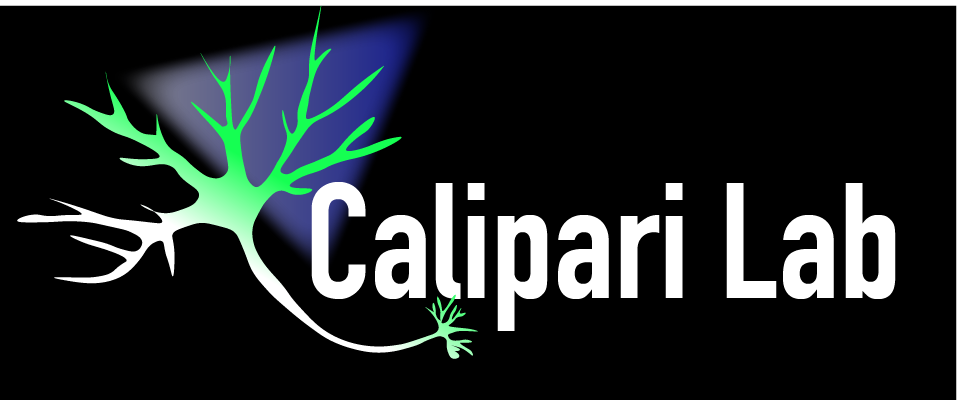techniques and ApproacHes
Our lab aims to combine cutting edge techniques with questions about motivation and reinforcement to understand the temporally specific manner in which information is encoded in the mammalian brain. Below are some of a few of the technologies we regularly incorporate into our research to answer these questions.
Fiber Photometry Calcium Imaging
Fiber photometry uses the genetically encoded calcium indicator, GCaMP, to record the neural activity of genetically defined subpopulations of neurons through an optic fiber in freely moving animals. We use this technique to record from defined neural populations in the nucleus accumbens while animals are completing complex operant tasks. This allows us to understand the temporally specific signaling that encodes information about salient stimuli and the cues that predict their occurance.
Multi-Region Calcium Imaging
Calcium imaging allows for cell-type specific recordings of neural activity in awake, behaving animals by utilizing an optic fiber to record from a genetically encoded fluorescent calcium indicator (GCaMP, described above). Using viral strategies, we achieve GCaMP6f expression in specific projection populations. Multiple optic fibers are implanted above the cell bodies of each projection population allowing for simultaneous recordings from these projections in awake and behaving animals to define the temporally specific projection activity that guides the execution of appropriate behaviors.
Pathway-Specific Rabies Tracing
Rabies viral tracing allows for tracing of monosynaptic inputs to defined subpopulations. The modified rabies virus requires a glycoprotein and TVA receptor to enter cells, and move transsynaptically; thus, to identify direct projectors to a specific population of neurons, we can use the viral tracing strategy outlined in the figure (left). Cre-dependent AAV carrying a TVA, glycoprotein and GFP tag was infused in region A and retrograde CAV2-Cre was infused into region B. A glycoprotein-deleted rabies variant was infused into region B allowing for robust rabies expression in occurs upstream of these region A-B projectors.
Optogenetics
This technique utilizes light activated ion channels to induce action potential firing (or inhibition) in neuronal subpopulations. Using channelrhodopsin (for excitation) or halorhodposin (for inhibition) we can temporally and spatially specifically activate or inhibit defined populations of neurons in vivo or ex vivo. In our lab, we combine optogenetics with recordings and behavioral assays to define the causal role of defined cell populations in complex behaviors.
Designer Receptors Exclusively Activated By Designer Drugs
DREADDs, use a modified human muscarinic receptor that no longer binds to its endogenous agonist, acetylcholine. The receptor is now only activated by binding of clozapine-N-oxide, or other actuators. This allows for selected activation or inhibition (depending on the type of DREADD being used) of genetically or projection defined subpopulations of neurons. This can be used in combination with operant conditioning to test how specific projection populations contribute to decision making and cue-reward processing.
Operant Conditioning
Operant conditioning is a type of learning where an animal learns the relationship between a behavioral action and a consequence. We use operant conditioning for a number of experiments, either related to learning about cues that predict rewards or negative stimuli, or related to voluntary drug consumption. Most often, our work focuses on drug self-administration, where animals press a lever to get drug injections. This voluntary process is a critical aspect of human drug addiction, and using operant tasks were can dissect the neural circuits involved in discrete components of behaviors associated with valence encoding and motivation.
Fast Scan Cyclic Voltammetry
FSCV is an analytical chemistry technique used to assess subsecond release and clearance of oxidizable species. We use this technique both in vivo (top, left) and ex vivo (top, right) to assess dopamine release and dopamine transporter kinetics. FSCV uses a carbon fiber microelectrode to oxidize and reduce dopamine. The change in current at dopamine's oxidation and reduction potential (bottom, right) is its unique neurochemical signature. FSCV has good temporal and spacial resolution and can be used in combination with many of the other techniques in the lab to understand how individual differences in dopamine and dopamine transporter function underlie behavior.
